Seeing as Hedgehog Awareness Week is happening from the 5th to 11th of May, we thought it would be useful to spread some awareness of hedgehogs! This post will focus on an important topic: which foods are healthy for your spiky friends, and which should be avoided?
Much like Homer Simpson, hedgehogs will munch on just about anything. However, plenty of ‘just about anything’ is really, really bad for them. This includes some surprising treats which well-meaning people put out verycommonly.
Less habitat means more homeless and hungry hedgehogs
Public awareness around global warming is finally on the rise – thank goodness! However, climate change is creating a ‘silent crisis’ under our very noses. Natural habitats for native animals are in rapid decline. This has caused a massive fall in population numbers for many species, such as skylarks, red squirrels, the small blue butterfly, bees and hoverflies, long-eared bats, and wildcats.
Oh, and let’s not forget our beautiful hedgehogs. (Especially when it’s Hedgehog Awareness Week!) According to the National Biodiversity Network (NBN), their populations have declined by between 30% and 75% across different areas of the countryside since 2000.
One of the causes? Britain has lost as much as 90% of its meadows, rendering our spiny friends homeless. And hungry.

Hedgehogs are moving into our neighbourhoods
With the loss of meadows and hedges, hedgehogs have been forced to try their luck in urban areas, meaning they’re looking to our parks and gardens. They can travel several kilometres in a single night to find food, often going the extra mile – literally – to find wild spots like piles of leaves to hide in.
Their proximity to us brings a pile of new perils such as lawnmowers, or unaware gardeners raking them up. They’re also at high risk of being run over by cars, especially if they can’t find safe passageways between gardens and are forced to cross roads daily.

Nature’s being deprived of insects for them to eat too, so hedgehogs depend on the munchies we provide them. Big shout-out to everyone who’s doing their best to help them!
But even with the best intentions, food aid may cause damage as well. The effects of a poor hedgehog diet can be pretty severe.
Life-threatening hedgehog metabolic bone disease
Metabolic bone disease (MBD) is already a familiar issue within aviary, bird, and reptile communities. It’s fairly new amongst hedgehogs, but there’s been a sure increase in diagnoses in recent years.
A calcium/phosphorus imbalance in their bodies puts them at risk of MDB, which causes suffering and is eventually fatal.
MBD causes the following symptoms in Hedgehogs:
- Disruption in calcium metabolism
- Weakening of bones
- Joint abnormalities
- Reduced nerve transmission
- Weakened muscle contraction and tremors, including in the heart
- Loss of blood’s ability to clot
- Paralysis, seizures, and cardiac arrest
None of that sounds like a huge amount of fun to us!
Causes of hedgehog MBD
There are several causes for Metabolic Bone Disease, such as:
- Vitamin D deficiency
- Underlying illnesses
- Stress and anxiety
- Lack of exercise
- Calcium/phosphorus imbalance
One of the main culprits is poor diet, especially when there’s not enough calcium and too much phosphorus in their food, or vice versa. Fortunately, we can have a direct influence on this. We can stop feeding them mealworms and sunflower hearts, for example.
But they love mealworms!
This is true, but remember: they’ll eat just about anything, and they’re well up for munching on foods they find tasty. Does this include unhealthy stuff? It most certainly does; that’s anything extra salty, sweet, or fatty. They’re a bit like us, really. But unlike us, they don’t know it’s bad for them.

What not to feed hedgehogs
The ideal hedgehog’s total diet would have a calcium to phosphorus ratio of between 2:1 and 1:1. Anything outside that range can quickly cause them a whole heap of health hazards.
Take sunflower hearts. They have a disastrous ratio of 1:15. Mealworms, meanwhile, manage a ratio of 1:7. Furthermore, they’re highly addictive to hedgehogs, soon making them only want to consume them. More like meal-to-avoid worms in our book!

Avoid food with an improper calcium/phosporus balance
Other poor-ratio foods are beetles, peanuts, and crickets. It’s best not to give these at all, even as a snack. Chances are that hedgehogs find some of those treats while foraging anyway. With a lack of decent, suitable insect nutrition in the wild, we can help them at least get their regular fill of proper food.
Dairy’s another big no-no, because hedgehogs are lactose intolerant. Milk and cheese will give them bad diarrhoea and can lead to serious illness too.
As for sweet treats like raisins, sultanas, currants, dried berries and the like: go easy. Better still, leave them out completely. Hedgehogs will take any chance they get to gnarf down food with high sugar content, giving them serious tooth decay and further digestion issues.
Here’s a handy table so you can quickly check what not to include on a hedgehog’s menu:
|
BAD food for hedgehogs |
Reason |
|
Mealworms |
Poor calcium:phosphorus ratio: 1:15 |
|
Sunflower hearts |
Poor calcium:phosphorus ratio: 1:7 |
|
Peanuts |
Poor calcium:phosphorus ratio: 1:6 |
|
Crickets |
Poor calcium:phosphorus ratio: 1:6 |
|
Beetles |
Poor calcium:phosphorus ratio: 1:3 |
|
Cheaper cat/dog food brands |
Poor calcium:phosphorus ratio Chemical additives High sugar content |
|
Dairy (cow’s milk and cheese) |
Lactose intolerance |
|
Raisins, sultanas, currants, berries |
High sugar content |
|
Bread |
Hedgehogs cannot digest this well |
|
Large chunks of meat |
Hedgehog teeth are too tiny to tear or chew big pieces |
|
Bacon or corned beef |
Too salty |
| Fish | Hard to digest, not natural |
| Eggs | Poor calcium:phosphorus ratio of 1:2.77 |
| Fruit/veg | High sugar and/or starch content |
What do hedgehogs eat?
So what should you feed hedgehogs? What foods can they actually eat?
Food that has a – you guessed it – good calcium/phosphorus ratio. This will maintain good hedgehog health and keep away scary diseases like MBD. It also shouldn’t be sugary or salty, or contain dairy, wheat, or nasty additives.
Giving small pieces of low-fat meat like chicken breast as an occasional snack works too – no more than a teaspoonful a day.
Make sure to replace wet food daily as it can go off quickly in the summer; it’s best to stick to dry food in winter as wet food can freeze.
And of course, last but not least: leave out a shallow bowl of fresh water every day!
Want to watch hedgehogs in your garden? Keep an eye on spiky activity with a wildlife camera, or install a bird box camera near the entrance to your hedgehog’s nesting site.
Feeding Guidelines
- Every evening, leave out a handful of food per hedgehog in a shallow dish
- For extra protection, you can serve the food in a hedgehog feeding station
- Always make sure there’s a shallow bowl of fresh water available, especially during warm weather, and make sure it’s not frozen during wintertime
- If feeding additional wet food, make sure to replace it daily in case it goes off during warm weather or freezes in the cold
In short:
Do Feed (refresh daily):
- Daily fresh water in a shallow bowl
- Specially designed hedgehog kibble with a calcium:phosphorus ratio between 1:1 and 1:2 such as Brambles Hedgehog Biscuits or high-quality cat/dog dry food (such as James Wellbeloved)
- Specially designed hedgehog wet food or high-quality cat/dog wet food (such as James Wellbeloved)
- Small pieces of low-fat meat like cooked chicken breast or turkey
- Meat heavy cat or dog food. As fresh and meaty as possible
Do Not Feed:
- Milk
- Cheese
- Sunflower hearts
- Mealworms
- Peanuts
- Crickets
- Beetles
- Fatty/salty/red meat
- Large chunks of meat
- Raisins, sultanas, currants berries
- Cheaper dog/cat food full of additives/sugar/bad calcium:phosphorus ratio
- Bread
- Fish
- Egg
- Fruit/veg
Help Hedgehogs
Besides feeding them healthy meals, there’s lots more you can do to help hedgehogs live hedgily ever after. For example:
- Provide shelter – like a cosy hedgehog house
- Make the shelter extra snug with fresh meadow hedgehog hay
- Help create a Hedgehog Highway with your neighbours
- Leave wild patches such as piles of leaves for hedgehogs to hide in
- Check before mowing and strimming to avoid forking them up
- Check before starting a bonfire
- Cover drains and holes
- Create ramps at ponds so hedgehogs can easily climb out again
- Do. Not. Use. Slug Pellets!
- Join hedgehog helper organisations such as Hedgehog Street and the British Hedgehog Preservation Society
- Provide a safe feeding station
Thank you for reading, and big hogs to you for helping our spiky garden friends! 🦔💚🦔

New Here?
If this is the first time you've stumbled across Green Feathers. We'd appreciate if you could take a look around our website and learn all about who we are & what we do.
More than anything we love helping people unlock their own digital window to the wild, whether it be with our Bird Box Cameras, Hedgehog House Cameras or general Wildlife Cameras.





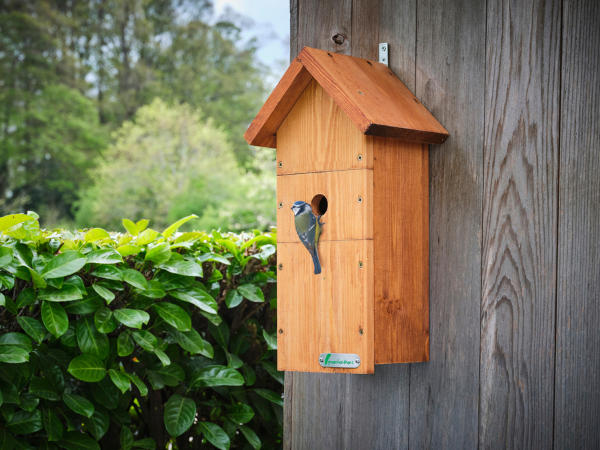
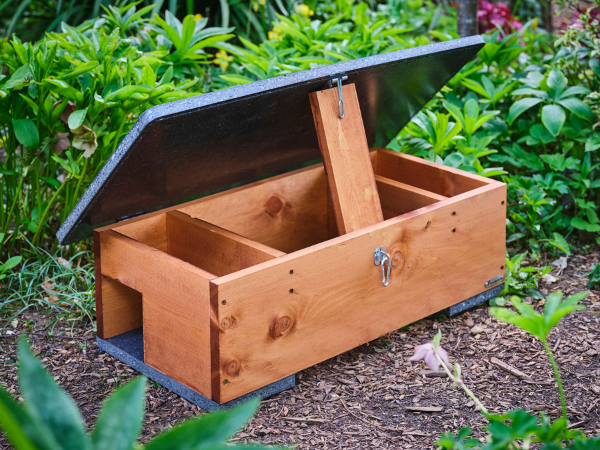
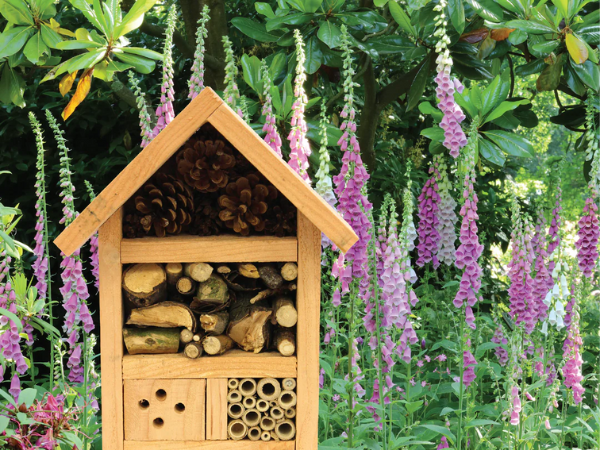
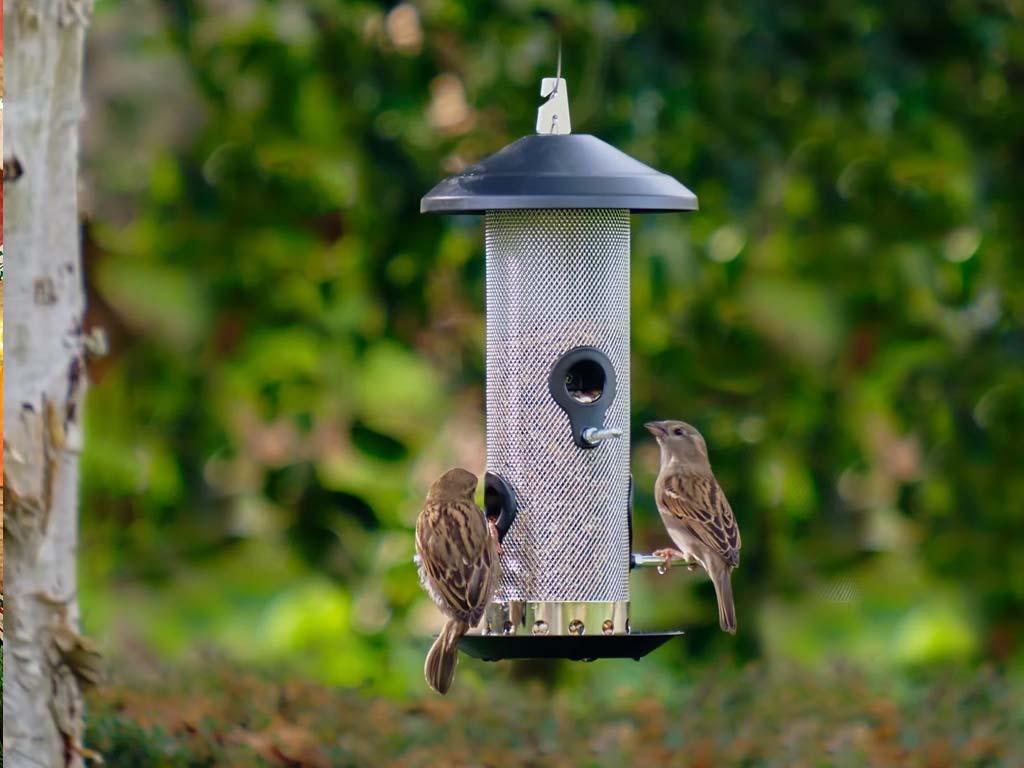
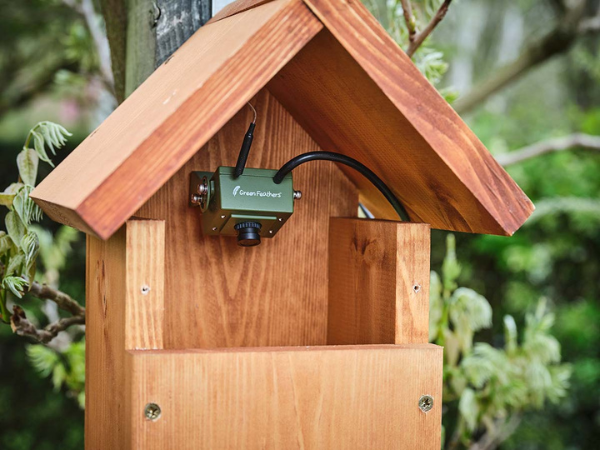
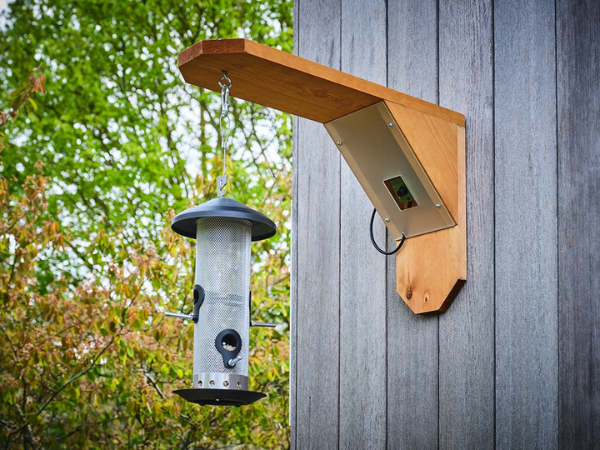



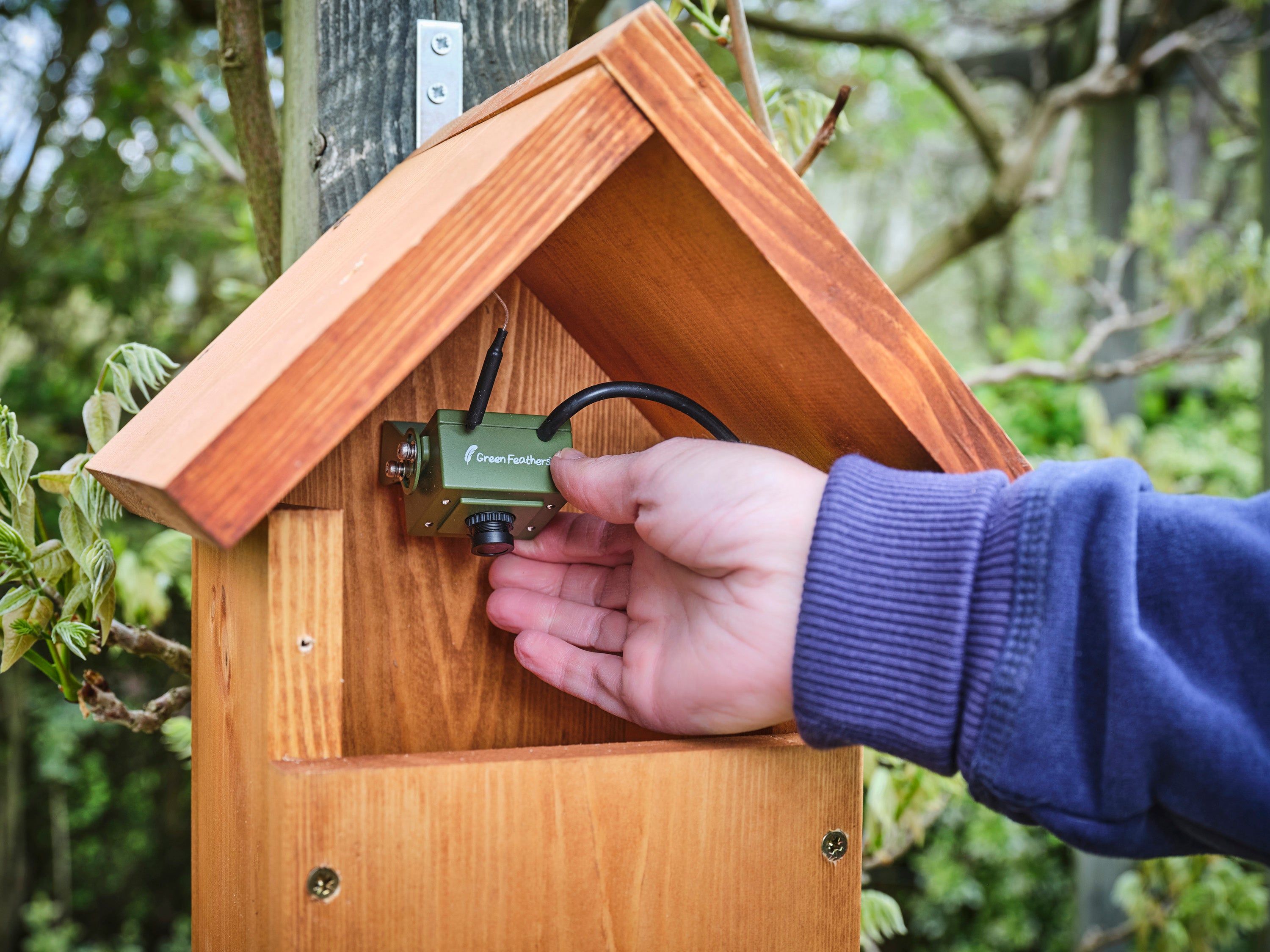
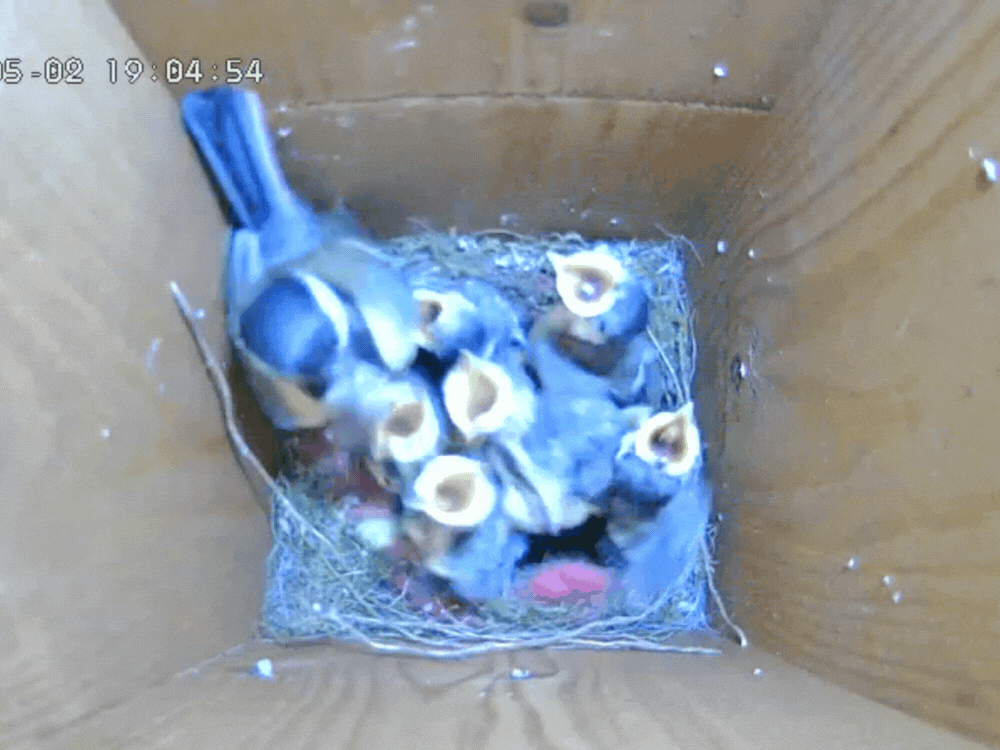







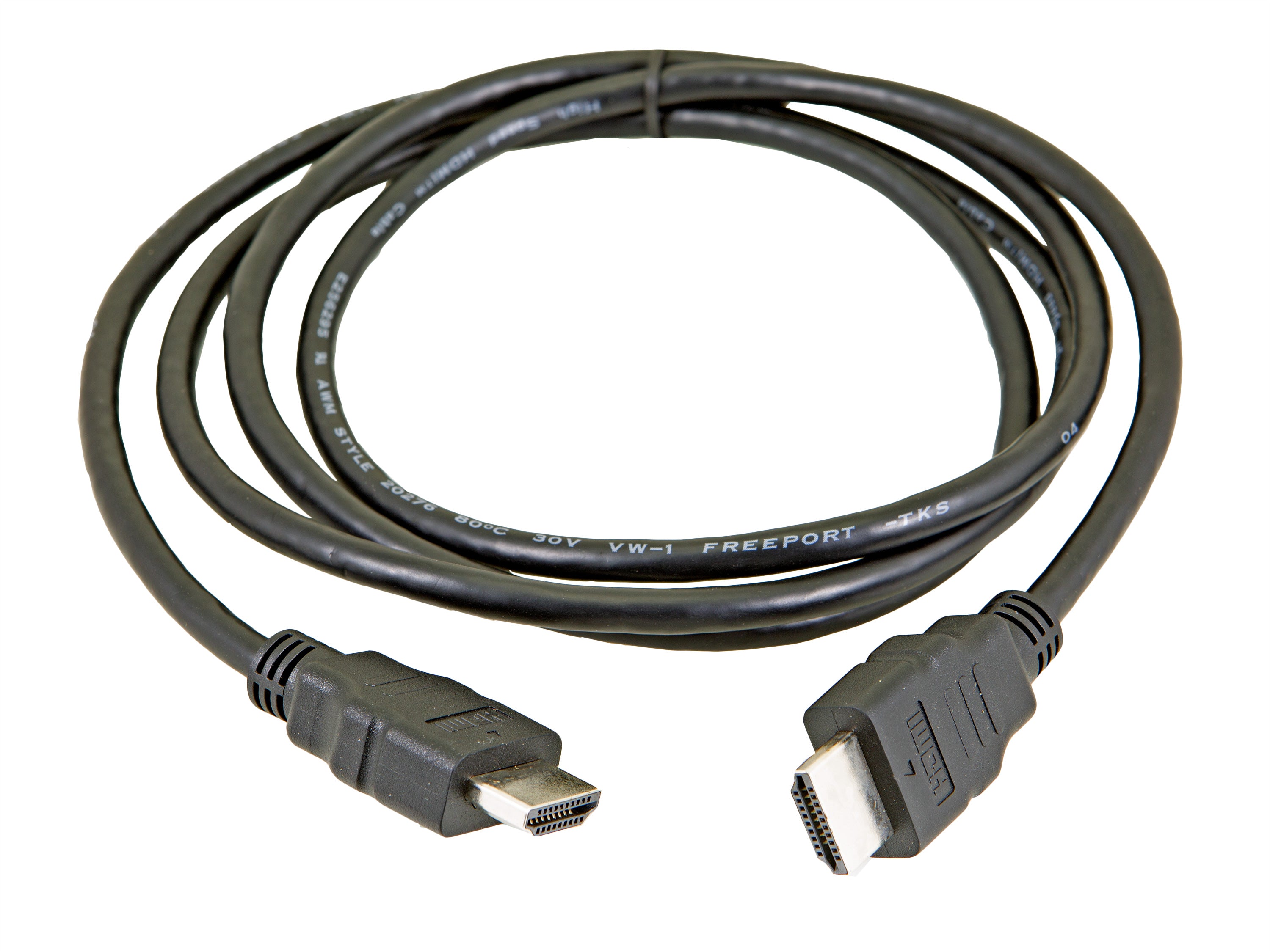



We have hedgehogs coming every night and we have been feeding them fried eggs from now on I will buy hedgehog food or good quality dog or cat biscuits
Lonely hedgehog discovered cut up banana skins around apple tree in wild life friendly garden. Variety of birds. Water available. Have made hideaways for garden visitors. Have friendly pheasant. Lost tail feathers. Beak too long. Eats brown bread. When around comes to call!! Not afraid of cats, but has definite ‘cat around call’. Am so fortunate to be so close to nature. ME12 3SQ.
Found a hedgehog in the garden for the first time. We live back to back with a small park & want to help wildlife for us & future generations What should we provide for them we have loads of birds that we feed but hedgehogs OMG so thrilled that they are wanting our help.
That’s the best article I have read on hedgehog care, clear and concise with what to do and what not to do. I hope you leave it up on your website. 👍
Sorry I meant to say it sleeps in it most days.